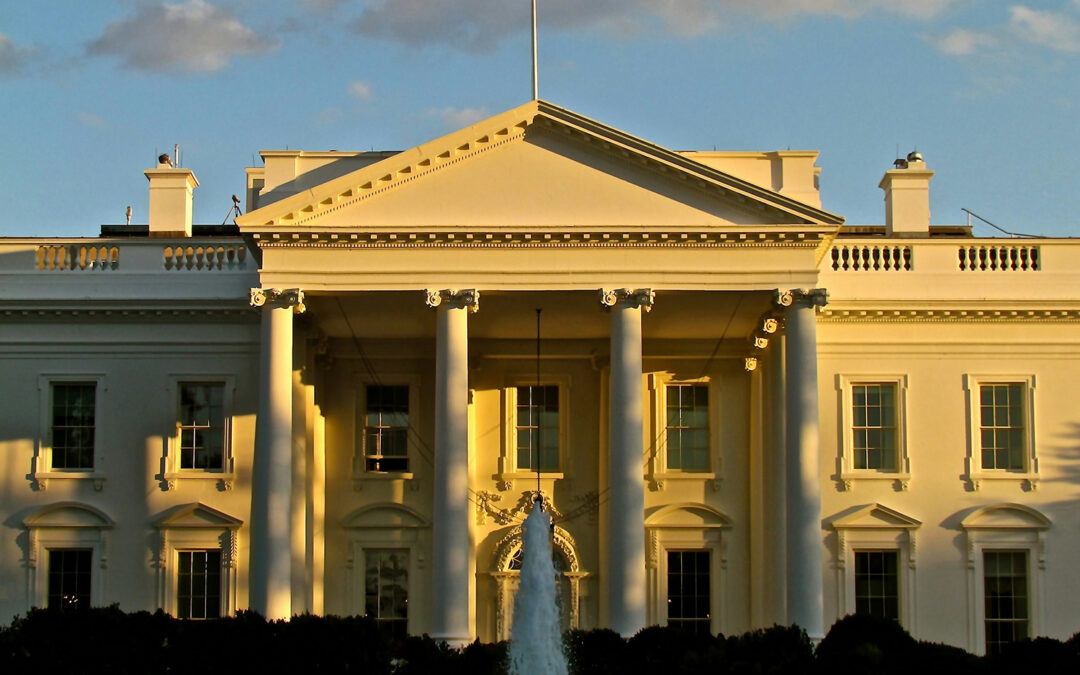The House speaker crisis calls attention to the potential for far worse political instability.
By Jean Parvin Bordewich and Roy E. Brownell II
Originally published on October 27, 2023 in The Wall Street Journal
The ousting of Kevin McCarthy as speaker threw the House into turmoil for weeks, and the situation would have been more chaotic if it weren’t for a little-known rule adopted 20 years ago that put Rep. Patrick McHenry in the chair temporarily. That rule is inadequate, however, as it limits the speaker pro tempore to mostly ceremonial functions. The rule reflects a broader problem of poor succession planning in the U.S. government that extends to the White House. The current system for ensuring continuity in the U.S. presidency has gaping holes that could create political instability in a national emergency. Solving these problems doesn’t require a constitutional amendment; Congress can do it with new legislation.
Under the Presidential Succession Act of 1947, if the U.S. president and vice president both die, become incapacitated or otherwise leave office, the House speaker is next in the line of succession, followed by the Senate president pro tempore, then the cabinet secretaries, starting with the secretary of state. But a closer examination of this plan reveals lurking dangers. The current system is flawed in several ways, but four stand out. The first problem is that lawmakers are in the line of presidential succession, which could create a political crisis if a speaker from one party replaced a president of the other. Republican Speaker Mike Johnson could replace Democratic President Joe Biden. One can imagine the outcry and the challenges to presidential legitimacy that could arise. Scholars have also long been split on the constitutionality of lawmakers’ succeeding to the presidency. Except for succession involving a president-elect and vice president-elect—which has a different constitutional basis—legislators should be removed from the line of succession and replaced with cabinet secretaries to eliminate concerns over the constitutional separation of powers and to ensure party continuity in the White House.
The second problem is that current law makes it possible for several successors to serve as acting president during a brief period. If a cabinet secretary becomes acting president, the law permits either the speaker or the Senate president pro tem to unseat the acting president if a lawmaker doesn’t initially take the reins of the executive branch. This provision should be eliminated altogether. The third danger is that there is no legal process for determining when the president and vice president are incapacitated or how they might regain their powers and duties if they recover. If both officeholders are unable to serve, the U.S. must have a plan of action. Congress should adopt a statute modeled after the 25th Amendment, which governs situations in which the president alone is incapacitated. The statute should allow the designated successor to the presidency—ideally the next eligible cabinet secretary—and the other secretaries to determine whether both the president and vice president are unable to fulfill their responsibilities. The successor and the cabinet would then submit that declaration to Congress. The president and vice president could regain their powers and duties through procedures similar to those outlined in the 25th Amendment.
Finally, under current law, the U.S. has no process for handling the problem of an incapacitated vice president serving alongside a healthy president. This scenario carries risks: It thwarts the 25th Amendment’s mechanisms governing presidential incapacity, in which the vice president plays an essential role. It also means that if the president dies or suddenly leaves office, the incapacitated vice president is poised to become an incapacitated president. Congress should create a process, again modeled after the 25th Amendment, to determine when a vice president is unfit to serve and to designate someone to fulfill the office’s succession- and incapacity-related responsibilities. Following 9/11, the American Enterprise Institute and the Brookings Institution co-sponsored a bipartisan panel—the Continuity of Government Commission—to explore policy options for preserving our political institutions during crises. In 2021 AEI established a successor commission following the Covid pandemic. Both panels highlighted the current succession plan’s shortcomings. Despite their warnings, neither the executive branch nor Congress has shown much interest in fixing the flawed presidential succession statute.
Terrorist attacks, the pandemic and growing threats against elected officials have shown that situations that once seemed unimaginable are now possible. Reforming the presidential succession process should be a nonpartisan issue. The Biden administration could deflect attacks on the president’s age by showing that it doesn’t fear addressing vacancy or temporary incapacitation. Republicans could show statesmanship by supporting legislation that would remove a GOP speaker from the usual line of succession. Solving the problems in our inadequate system of presidential succession could protect the U.S. from worst-case scenarios and offer a rare opportunity for bipartisanship at a time when we need it most.
